![Drone Insurance Guide [2024]: The Most Up-to-Date Information](https://www.thedroneu.com/wp-content/uploads/2024/06/Drone-insurance-guide-1-1024x597.png)
Drones are everywhere! From Hollywood movie sets to Midwestern farms, Silicon Valley offices, and even New York City real estate tours, these flying cameras are taking many industries by storm.
However, even the most skilled drone pilot understands the inherent risks and legal liabilities associated with flying drones. Technical malfunctions, sudden weather changes, and pilot errors are just a few of the many factors that can lead to accidents. In the best-case scenario, these issues might only damage your drone; in the worst case, they could harm others or their property.
That’s where drone insurance comes in.
But drone insurance isn’t as straightforward as it sounds. Because you aren’t just talking about the hardware, you are also getting into legalities and other factors that are unique to drones.
That’s exactly why we created this guide.
This guide will help you navigate through the various aspects of UAV insurance in the United States. We will break down the different policies available and show you how to choose the right one so both your drone and yourself as the pilot are protected.
First, let’s take a look at why drone insurance is important.
Why Do You Need Drone Insurance?
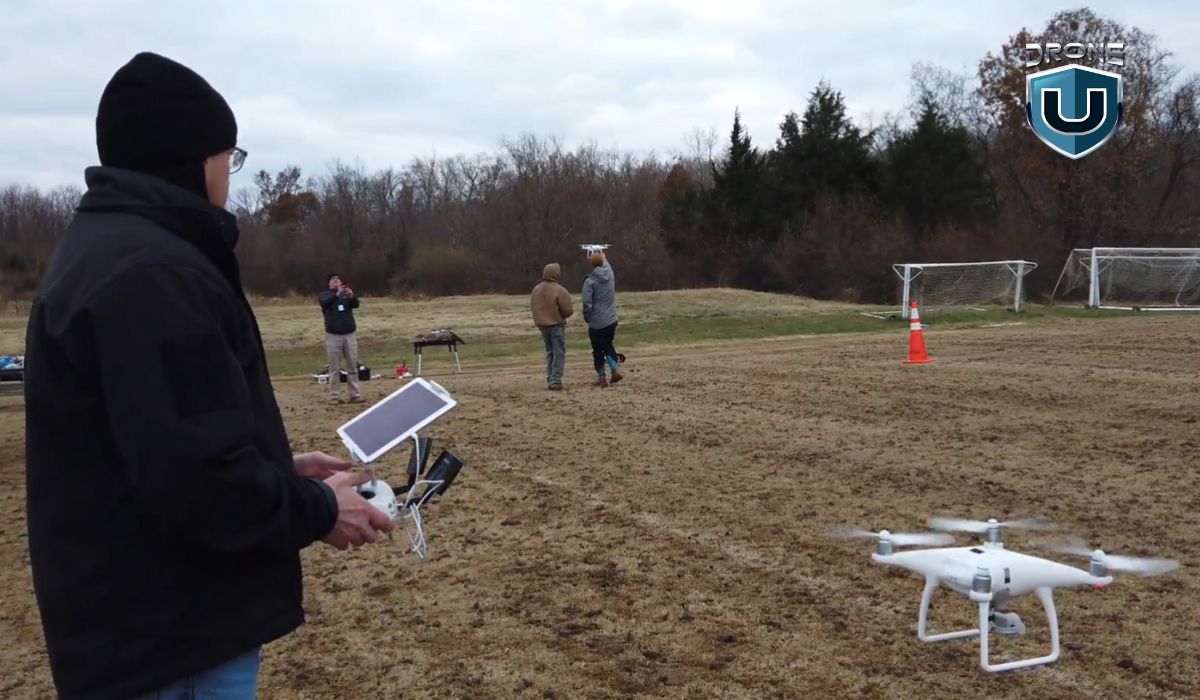
With drones, you can take stunning photos, capture smooth videos, conduct inspections, deliver consumer products, and much more.
However, with great power comes potential danger, and therefore, greater responsibility.
Having drone insurance is one of the best ways to get peace of mind and financial protection from drone risks.
Here’s why drone insurance is an essential investment:
1. Liability Shield
Imagine your drone malfunctioning and falling onto someone, injuring them or damaging property. The resulting medical bills or repair costs could be substantial. This is where drone insurance with third-party liability coverage comes to the rescue. It acts as a safety net, covering these unexpected expenses and saving you from financial hardship. This is especially important if you fly your drone near populated areas or sensitive infrastructure.
2. Crash Protection
Accidents happen, even to the most skilled pilots. A gust of wind, a miscalculation, or a sudden obstacle can send your drone tumbling. Drone insurance has your back in these situations, helping you recover the costs of repairs or even replacing your damaged drone. This can save you a significant amount of money, especially for high-end drones.
3. Client / Employer Requirements
If you’re using drones for commercial purposes, many employers or clients will require you to have drone insurance. It’s a standard prerequisite for working on certain projects or flying in specific areas. Drone insurance demonstrates your professionalism and readiness to handle potential risks, making you a more attractive candidate for job opportunities. This requirement not only helps protect your clients but also boosts your credibility and reliability as a drone operator.
4. Legal Necessity
In many regions, drone insurance is mandatory, particularly for commercial operations. Having a valid policy shows you’re following the rules and helps you avoid fines or penalties. It shows you’re a responsible drone operator who prioritizes safety.
5. Peace of Mind
Drone insurance is more than just following the law. It’s an investment in peace of mind. Knowing you’re covered allows you to relax and focus on capturing stunning aerial footage or completing your mission. You don’t have to constantly worry about the potential financial burden of an accident. This lets you fly with confidence and enjoy your drone to its fullest potential.
But which drone insurance should you choose? Let’s break it down.
What Kind of Drone Insurance Coverage is Available?
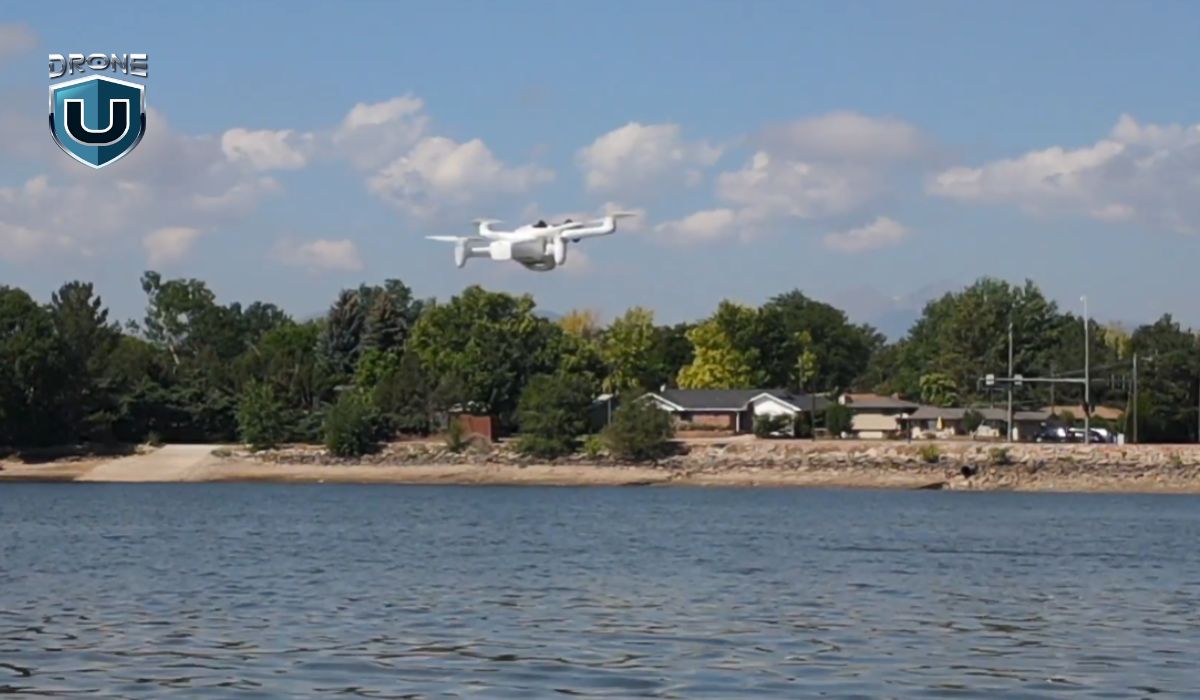
Similar to other insurance types, drone insurance also provides a wide range of coverage areas.
Let’s take a look at some of them:
1. Hull Insurance
Hull insurance covers damage to the actual drone. Physical damage that affects your drone itself. If your drone crashes, malfunctions, or has an accident, this insurance can help with the repair or replacement costs. With some Insurance providers, such as SkyWatch.ai, it will also cover theft, flyaway, and disappearance. Keep in mind this does not cover the payloads – sensors, etc. These ancillary items must be listed separately on your policy to be covered (See “Payload Insurance” below).
2. Liability Insurance
If your drone causes harm to other people or damages their property, this insurance will protect you from financial responsibility. This is especially important for commercial drone operators who fly in populated areas where the risk of injury or property damage is higher.
3. Payload Insurance
If you have special equipment like cameras or sensors attached to your drone, this insurance will cover them in case they get damaged or lost. This is generally not automatically included and therefore you’ll need to ensure any payloads you want covered are noted specifically in your policy.
4. Ground Equipment Insurance
This insurance covers the equipment you use on the ground to control your drone, like extra remote control, base stations, cameras, and any other equipment you add to your policy. Some companies, such as SkyWatch.ai, will include these items with Payload insurance under ”Equipment Insurance”.
5. Personal Injury Insurance
Personal and Advertising Injury Coverage typically provides protection against claims arising from offenses like libel, slander, defamation, wrongful eviction, and false advertising. This coverage is designed to protect businesses and individuals from legal liability due to personal and advertising injuries that occur in the course of their operations. With SkyWatch policies it will also include coverage against violation of privacy.
6. Non-Owned Coverage
Drone pilots may find themselves in a position in which they are flying another drone pilots’ drone, ie. a drone they do not own. While most carriers that we’re aware of do not offer insurance dedicated to non-owned drones, you can usually still cover them as you do with one of the drones you do own.
Before choosing a drone insurance policy, consider what kind of coverage you need based on how you use your drone. For example, if you own a business, you must look for drone business insurance that provides extensive coverage.
As always, policies and coverage can vary from provider to provider, so it’s recommended to compare options. You can also talk to an insurance agent or attorney who knows about UAV insurance to help you with the process.
Cost is another important factor to consider when choosing drone insurance.
How Much Does Drone Insurance Cost?
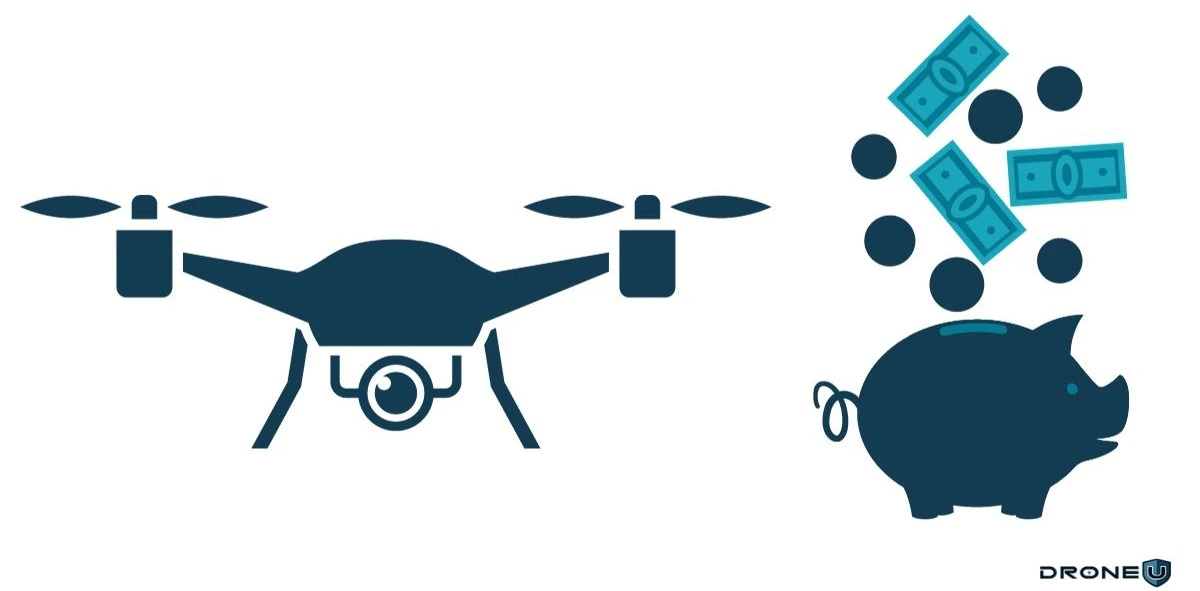
The cost of drone insurance varies significantly depending on several factors, including:
- Type of coverage
- Amount of liability coverage selected
- Value of the drone and related ancillary equipment including in the policy
- The purpose for which the drone is being used (for example – basic marketing videos vs inspections of complex infrastructure assets)
- Pilot experience
- Geographical location where the drone will be flown.
1. Liability Insurance
Drone liability insurance is usually the most expensive insurance. It can start from $500 to $1,000 per year for $500,000 to $1 million coverage, but it may go up if your drone operations are considered riskier.
Clients such as large production houses and big construction companies may even ask drone pilots to purchase coverage with a $5 million CSL (Combined Single Limit) or even more.
Combined Single Limit is the total of bodily injury liability coverage and property damage liability coverage.
2. Hull Insurance
It is often around 8-12% of your drone’s value per year. For example, if your drone is worth $1,500, hull insurance might cost around $120 to $180 per year.
Invasion of Privacy, Personal Injury, and Cyber Liability Insurance can be added to a drone liability policy, but the cost depends on the insurance company and the specifics of your drone use.
3. Monthly and On-Demand Insurance
Some companies offer short-term insurance options.. For example with SkyWatch.ai you could cover your drone by the hour, starting at $10 and it could go higher depending on the details of the flight and drone. Another good choice for those who don’t fly a lot is to go with a monthly coverage starting at $62 for $1M coverage.
Insurance companies are prone to considering the depreciated value and not the actual market value when settling a claim. So, avoid inflating your drone value when buying insurance.
Typically, liability-only drone insurance cost for coverage of $1 million is around $650 per year. If the cost of your Hull insurance amounts to 10% of the cost of the drone, you’d be looking at a total insurance invoice of $750 for the year.
Your UAV insurance cost will further increase if you opt for any add-ons like ground equipment coverage and payload coverage. We strongly recommend purchasing a higher drone liability insurance limit if you are taking on risky drone jobs.
How Can You Save on Your Drone Insurance Cost?
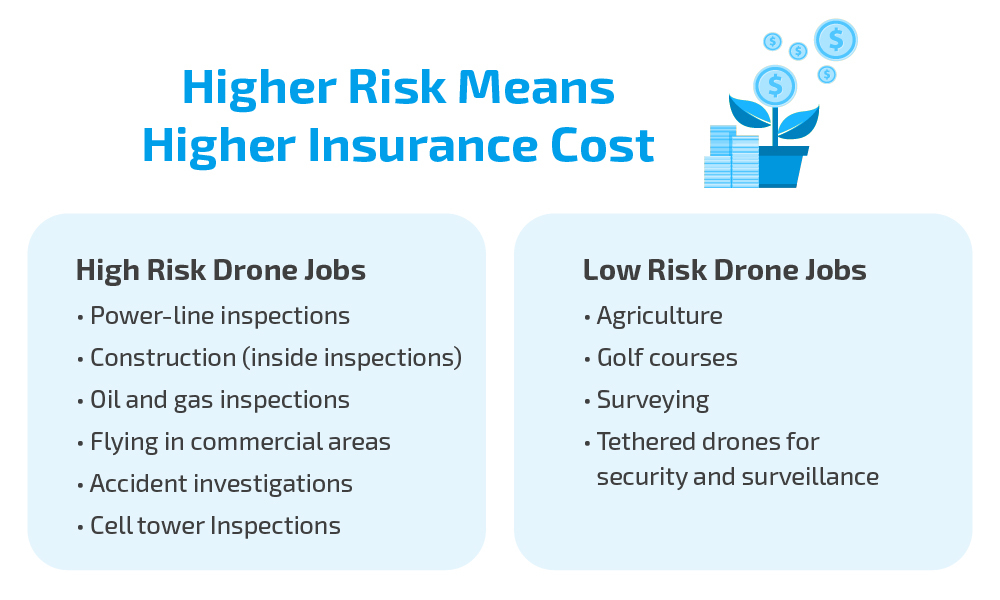
First, insurance is negotiable. So do not be afraid to haggle. After all, a penny saved is a penny earned. Secondly, your experience and training will be taken into account. Remember, your insurance policy is often reviewed by an underwriter.
Many of the providers drone pilots choose to purchase from have fairly fixed pricing for the standard types of usage, which most drone pilots fall into. So, there may be less opportunity for haggling in these cases. But it never hurts to ask.
If you have a long, accident-free flying history and have undergone drone training from an organization of repute, these factors will work in your favor. Your drone crash insurance cost also depends on the nature of the jobs and the associated risk.
So, if you are using your drone for agricultural mapping, your insurance cost is likely to be lower compared to someone who is flying in areas of heavy interference.
Next, if you are an established player with a fleet of drones, you are likely to be offered a better deal. Your per-unit drone crash insurance cost is likely to be lower.
Also, for extremely small damages, it is not worthwhile putting in a claim. Typically, deductibles are pegged at 5% of the insured value. So, for small damages, it would be financially prudent to bear the cost yourself. Moreover, the lower number of claims filed will result in lower insurance costs in the future.
Finally, do not hide any information from your broker in a bid to get lower coverage. This is a strict no-no.
Validity Periods of Drone Insurance Policy
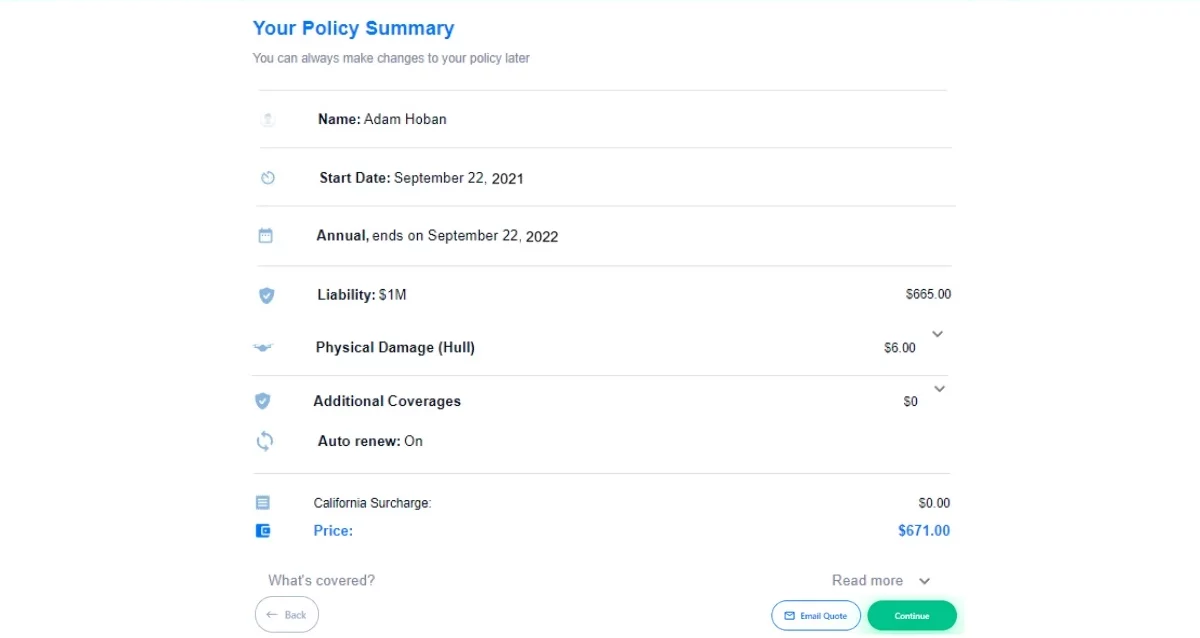 Source: Skywatch
Source: Skywatch
It’s important to know how long your policy will be valid before you buy it. Generally, UAV insurance policies are offered for specific durations.
|
Short-Term Policies |
Annual Policies |
| These policies might cover your drone for a single flight or a limited period, such as a day, a week, or a month. These policies are often used by individuals or businesses that need coverage for a specific event, project, or short-term activity. | Many insurance companies offer annual policies that provide coverage for an entire year. These policies are suitable for drone operators who fly their drones regularly and want continuous coverage without the need to purchase insurance for each flight. It will also offer the best value for money compared to short-term policies. |
Where to Buy Drone Insurance?
In the vast market of drone insurance providers, each company has its unique strengths and specialties. Here is a quick comparison of top drone insurance companies so you can make an informed decision.
1. SkyWatch
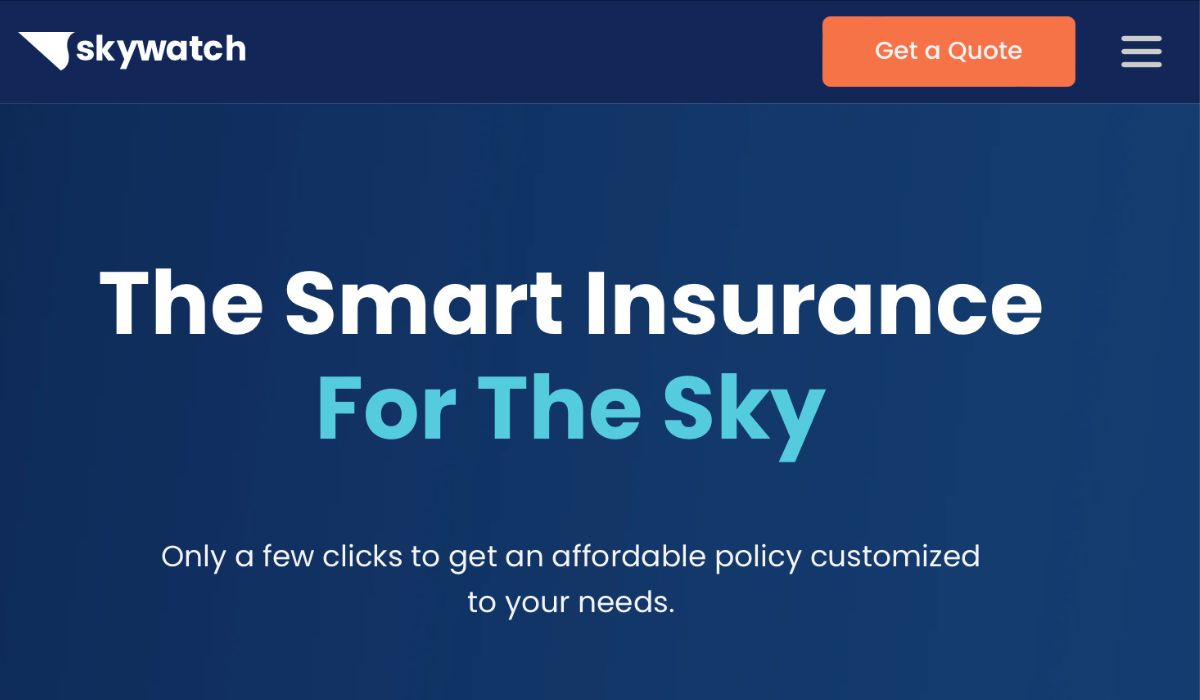
SkyWatch.AI offers comprehensive insurance policies that you can customize based on what you need with a few clicks online. You can choose how much coverage you want for liability, damage to your drone (hull), third-party property damage coverage, and even coverage for the risk of invasion of privacy. Once you purchase a policy the Certificate of Insurance ‘COI’ will be emailed to you, making you ready for your mission quite quickly.
With SkyWatch you can get policies by the year, month, or hour. The company holds a 4.9-star score on reviews and is considered to have some of the best customer support in the market.
Enroll in our ‘Don’t Crash Course’ to become a safer pilot and save money on insurance policy.
2. DroneInsurance.com
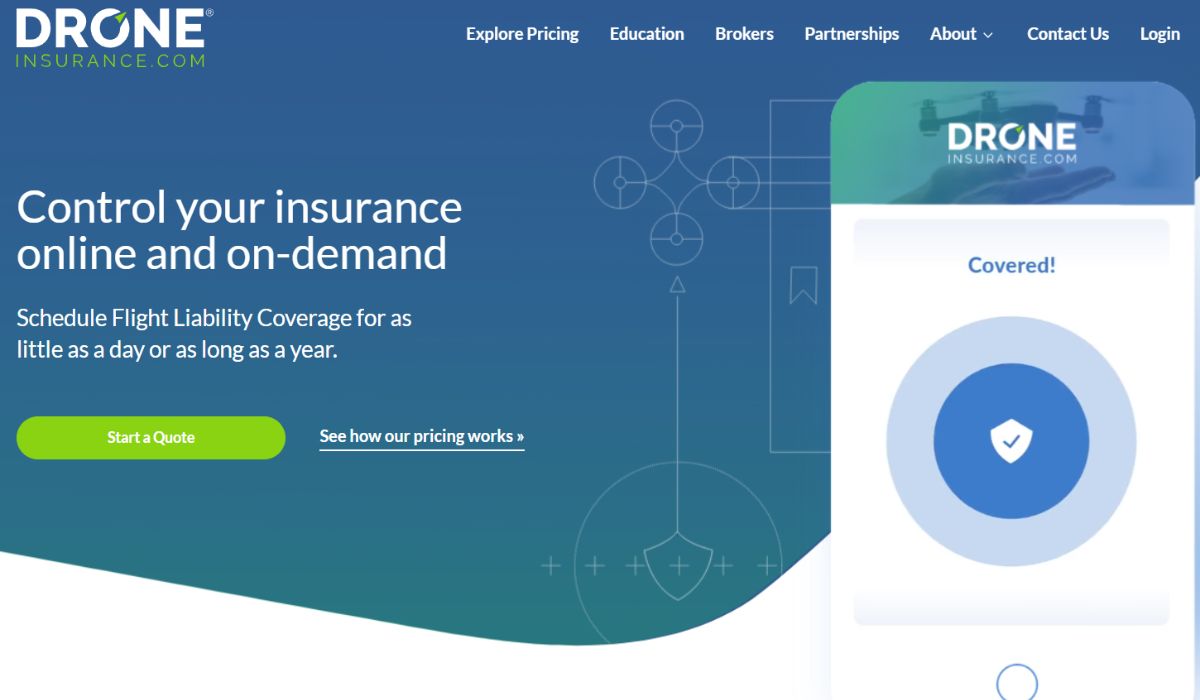
DroneInsurance.com was acquired by Skywatch in the fall of 2023.
3. AirModo
AirModo offers drone operators fast, simple, and affordable drone insurance in a single, easy-to-use app. They state: “We are committed to providing you with a best-in-class insurance solution that costs less than the other drone insurance providers.”
They offer policies from hourly to annual depending on your specific needs, including whether you’re flying recreational or for commercial purposes.
AirModo is available in all 50 states, as well as D.C. and Puerto Rico.
As of the writing of this article, they do not offer hull coverage; but rather, offer only liability coverage for incidents that occur while using the unmanned aircraft system noted on your policy.
4. Bullock Agency, Inc.
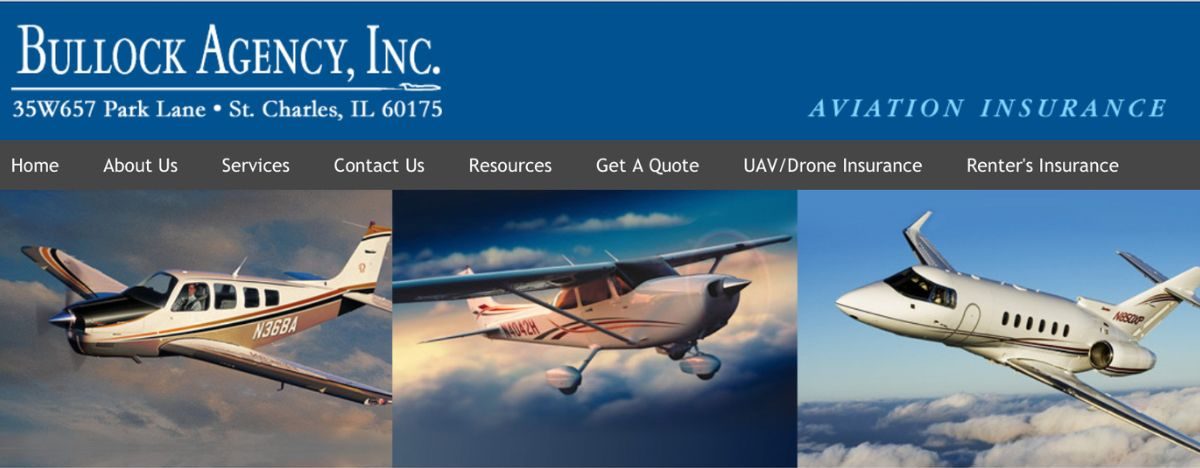
Bullock Agency has been a trusted insurance company for more than 30 years. They are experts in aviation insurance and offer different types of drone insurance policies to both businesses and individuals.
One of the great things about getting drone insurance from Bullock Agency is that they have a team of experienced professionals who are experienced in the field of aviation insurance, including drone coverage. They can guide you to identify the drone insurance policy elements that fit your specific needs.
5. Avion Insurance
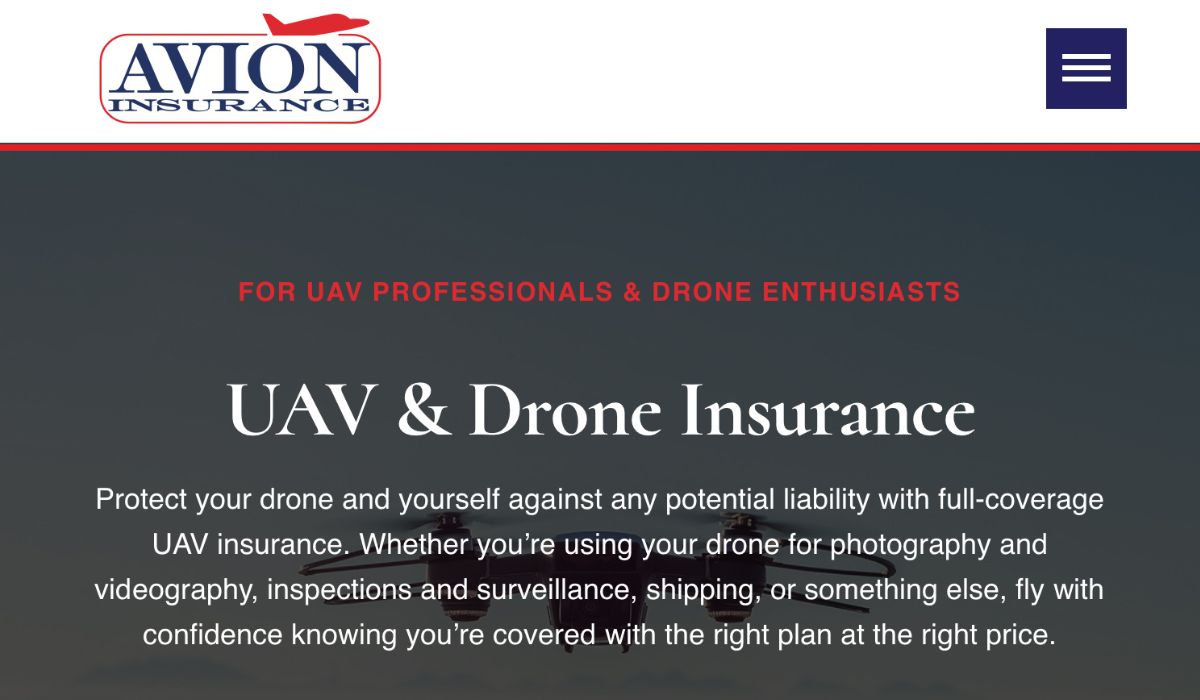
Avion Insurance is a well-known company with a long history of insuring aircraft. They understand the potential risks that come with drones. Avion’s UAV insurance policies offer coverage for both liability and physical damage. Their policies are also customizable, so you can choose the coverage that best meets your needs.
6. State Farm Drone Insurance

State Farm Drone Insurance Policy is like a solid protection plan for your drone if you are a recreational pilot. It covers your drone if it gets stolen, accidentally damaged, or faces certain dangers. It is one of the best recreational drone insurance options.
If your drone suffers physical damage or goes missing because of an accident or theft, you can ask State Farm for help. The good thing is that it’s reasonably priced, and in most cases, you won’t have to pay any deductibles. Isn’t that cool?
Check out our comprehensive State Farm Insurance Review to learn more.
7. Global Aerospace
Global Aerospace Drone Insurance is the Underwriting entity for many, if not most, of the policies that are written for UAS pilots in the US. They also offer policies directly if you prefer to go that route. They offer all of the expected coverages of a comprehensive policy, including damage to the drone, liability for any harm (personal or property) caused to others, and even the risk of invasion of privacy.
They also provide coverage for non-owned drones. The insurance is quite inclusive, safeguarding against third-party liability, damage to the drone, its contents, and related equipment, as well as privacy invasion and medical expenses.
Their policies are available for both recreational and commercial drone users. One other great feature of a policy direct from Global is that you are covered anywhere around the world.
8. DJI Drone Insurance
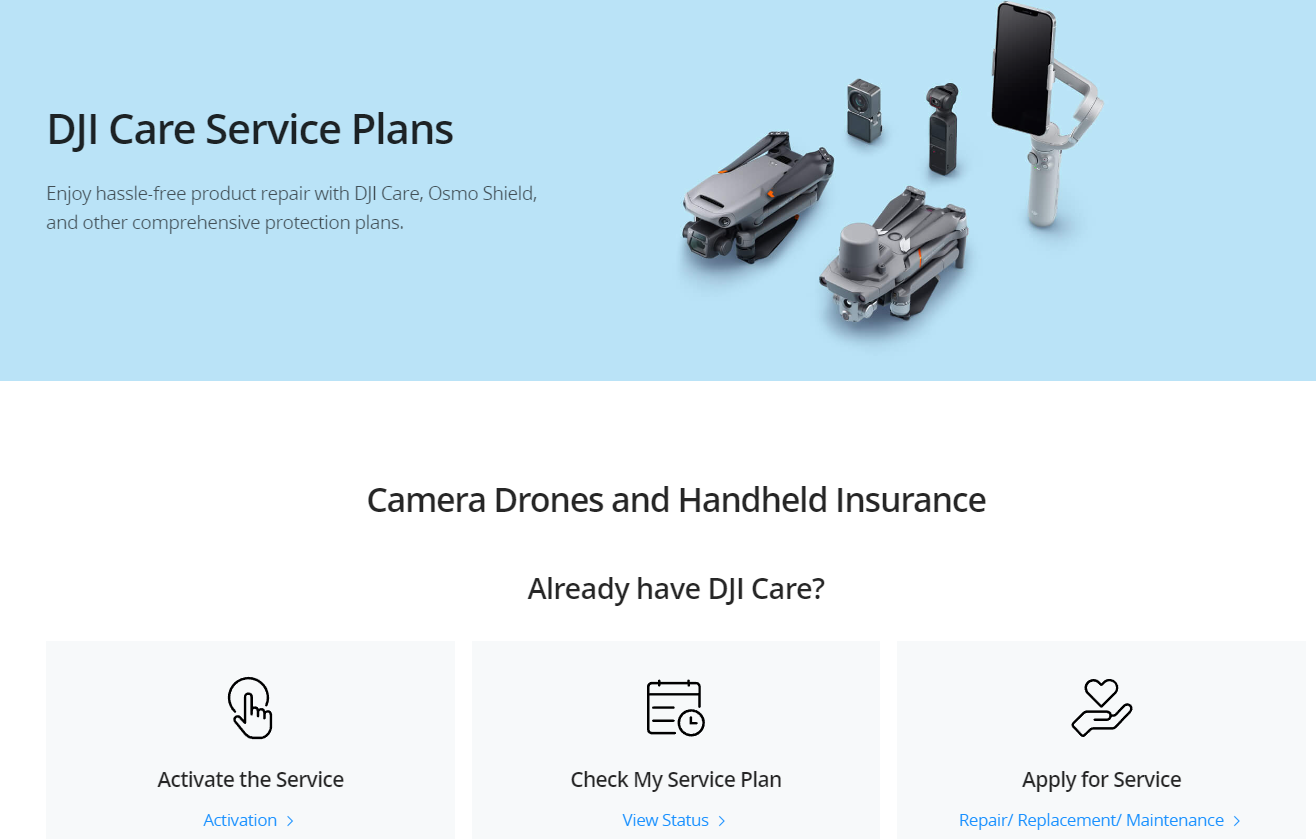
For those of you who are flying DJI drones, the coverages offered by DJI can be a good option. Depending on the age and type of DJI drone you’re flying, your options will include:
DJI Care – This is the coverage that was offered for what are now older drones, like the older Phantoms and Inspires. It covers damage to your DJI aircraft, gimbal, or camera during either normal use or accidental damage.
DJI Care Refresh – This is a 12-month service plan that provides complete and comprehensive coverage in the event your DJI product is damaged during normal use. This product offers the pilot up to two product replacements in one year or four in two years (requires an additional fee for the second year). Covered situations include Collisions, Water Damage, and even Normal wear and tear.
Care Refresh Plus was discontinued back in July of 2023, but with this change came some nice upgrades to the Care Refresh product, including the opportunity to obtain a third year of coverage as well as specifically purchase coverage for flyaways.
As with any insurance coverage, it’s important to review the fine print to ensure the product meets your needs.
9. BWI | FLY
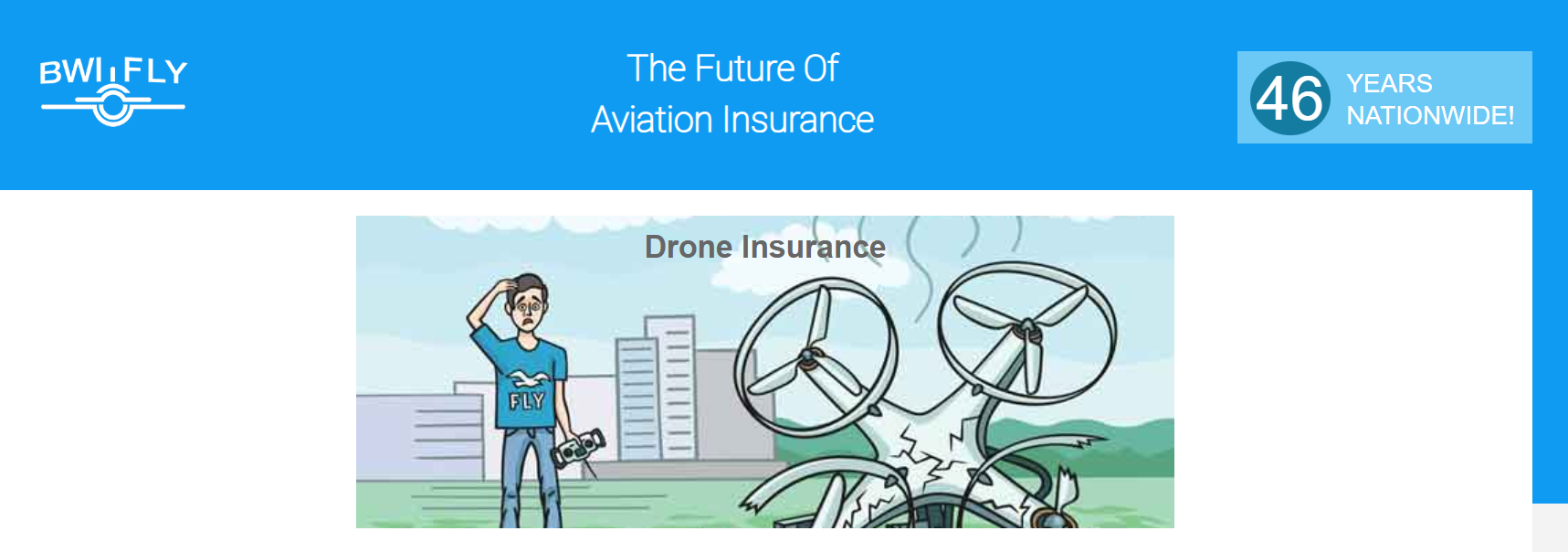
BWI has been providing aviation insurance since 1977 and has been a proactive and innovative contributor to the aviation industry since it began. This culture transitioned smoothly into drone insurance as the UAS industry began to grow and the needs of drone pilots became more profound.
They offer a wide range of products including liability coverage up to $25,000,000, physical damage (Hull coverage), and payload coverage. They’ll also cover what are considered to be more risky operations, such as drone delivery.
Still not sure which drone insurance to choose? Let us help.
Which is the Best Drone Insurance For You?
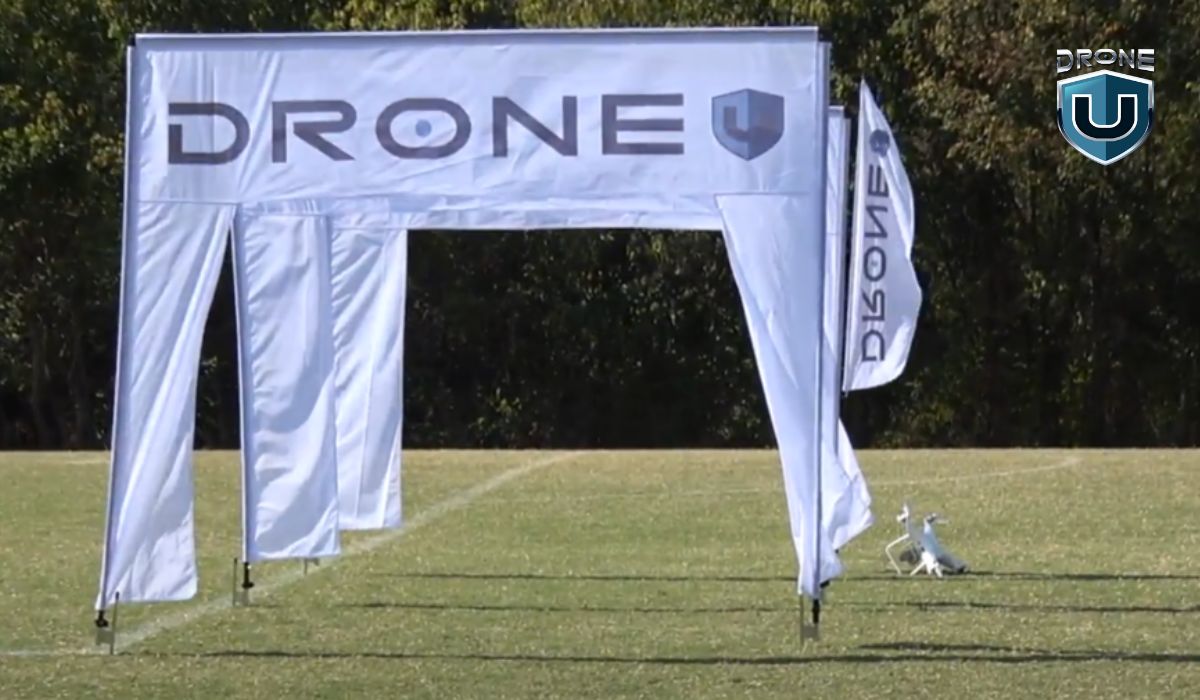
Choosing the right drone insurance depends on multiple factors including the kind of flying you do, the value of your equipment, and the potential risks you face.
Here’s a step-by-step guide to help you pick the best drone insurance for your needs:
1. Determine Your Needs
The first and most important element to consider when beginning your search is to determine if you’ll be flying for fun or business. Generally, commercial pilots will need beefier coverage. If you’re flying recreationally, your risks are likely to be much lower. In many cases, as a recreational pilot, your homeowner’s policy may be all you need. It’s always best to check with them first.
As a commercial pilot, you’ve likely got business interests to consider, such as assets, employees, the types of work you’re doing, and many other considerations.
How often you fly also matters: if you’re an occasional flier, think short-term insurance. Terms like monthly or even hourly if that fits your paradigm.
If you fly more frequently, a longer-term plan (usually annual) will save you a fairly substantial amount of money compared to paying for multiple short-term policies. If you’re jetting off abroad, double-check that your coverage includes international flying. And remember, flying downtown versus out in the country can come with its own set of risks, so choose accordingly.
2. Types of Coverage
We touched upon this topic earlier in this article. You need to be aware of the options available in the market, such as liability insurance, hull insurance, and ground equipment insurance. This knowledge will help you pick the best one for your needs.
Note: Most policies will have exclusions. Make sure you are aware of what isn’t covered.
3. Shop Around
When you’re on the hunt for UAV insurance, don’t just jump on the first deal that comes your way. Always play the field by getting multiple quotes—different providers often have their own spins on rates and what they’ll cover. While you’re comparing, it’s a smart move to research reviews and see what folks are saying about a provider. This is your inside scoop on how they handle things, especially when it comes to filing a claim. A low rate will feel a lot less fabulous if the insurance company is difficult to work with when you need to make a claim.
Understand what you’re signing up for, check what’s covered, and keep an eye out for any sneaky costs or conditions. Doing your homework now can save you a whole lot of headaches later.
4. Understand What’s NOT covered by Drone Insurance
Damaged add-on equipment: Standard hull coverage for drones often excludes damage to non-drone accessories. For instance, Skywatch.AI does not insure items like computers, mobile phones, non-drone cameras, and tablets. To protect these items, consider purchasing additional coverage, such as payload insurance.
Incidents caused by unlicensed or unregistered drone operators: Commercial drone pilots must be FAA licensed, and all operators must be listed on your drone insurance policy. Failing to comply with these requirements can lead to denied claims.
Injuries to employees: Injuries sustained by your employees are typically covered by workers’ compensation insurance.
Political or terrorist acts: Coverage usually does not extend to activities with political or terrorist intentions.
Reckless or illegal activity: Claims may be denied if the drone is used recklessly, illegally, or in a manner that intentionally invades privacy.
Strikes, riots, civil commotions, or labor disturbances: Coverage often excludes claims arising from these types of civil unrest.
War and rebellion: Claims resulting from war, invasion, rebellion, revolution, insurrection, or martial law are generally not covered.
UAV Insurance: Our Pick
We, at Drone U, switched to SkyWatch.AI several years ago and have been using them since. Skywatch has been a consistent performer and has done a nice job of continually improving. With the size of our fleet, it’s been important that our policy be fairly nimble as we may have several drones that don’t see the air for months at a time.
With its customizable pricing mechanism, ease of use, and outstanding customer support, we think there’s a pretty good chance SkyWatch.AI drone insurance will be a good solution for many other drone pilots.
Skywatch.ai is backed by the aviation insurance giant, Global Aerospace, a company with more than 100 years of experience in the insurance sector, with an A.M. Best rating of “A” (Excellent).
Conclusion
Whether you’re flying drones as a hobby or for work, getting drone insurance is a smart move.
When choosing UAV insurance, think about what coverage you need based on how you use the drone, your experience, and how much the insurance costs.
Liability coverage is important to cover legal claims and costs if your drone causes accidents. Physical damage coverage protects your drone if it gets damaged in a crash or collision.
If you follow safe flying rules, keep detailed flight records, and get proper safety training, you might be able to get lower insurance costs.
One of the best ways to hone your skills and fly safely is to attend our flight mastery in-person training. This training will help you become a safe and confident drone pilot. Click here to learn more about our Flight Mastery training.
Frequently Asked Questions
1. Is it mandatory to get Insurance?
Certain states have made insurance mandatory for commercial pilots. Whereas, in other states, Part 107 pilots can still fly legally without purchasing insurance.
So, should you fly without insurance? No! Don’t do it.
If a drone flown by an uninsured pilot causes bodily harm or property damage, all of the financial liability will fall on the pilot. By not getting insurance, a pilot risks losing all his assets.
We’re aware of several drone-related incidents, but one in particular stands out. A professional Part 107 pilot we know well lost control of his drone and flew into a building through a window on the 27th floor. Luckily for the pilot, the floor was unoccupied so fortunately there were no injuries. There was property damage of course, which thankfully was taken care of by his insurance coverage. The incident could have been much worse, especially if he had not had insurance coverage.
Remember – If you are buying commercial on-demand insurance, your provider assumes that you have a Part 107 certification. You CANNOT claim damages without a valid Part 107 certificate. Certainly, another strong reason to get your Part 107 license.
2. Are UAVs covered by Homeowners Insurance?
Probably not if you are a commercial pilot. There are exceptions to this, but most Part 107 pilots will have to purchase a separate insurance policy. If you are a recreational pilot, your drone might be covered under your homeowner’s insurance. However, we strongly recommend that you check the exact nature of coverage with your insurance provider.
3. Does insurance for drones cover theft?
Some drone insurance policies may include coverage for theft or loss of your drone. It’s essential to review the policy details to confirm this coverage.
4. Can I get insurance for my recreational drone?
Yes, recreational drone insurance is available to protect your drone from damage and provide liability coverage.
5. Does drone insurance cover damage caused by the drone to someone else’s property?
Yes, it typically includes liability coverage, which protects you if your drone causes damage to someone else’s property.
6. What factors affect drone insurance premiums?
UAV insurance premiums can be influenced by factors such as the type of coverage, UAV specifications, operator experience, and flying history.
7. Why should you choose Admitted Insurance Carriers?
Admitted insurance carriers are licensed by the State Department of Insurance in the state where they are located. Is this important? Most likely, yes, but there are times when working with a Non-Admitted carrier is warranted.
Two Reasons to Purchase Insurance from an Admitted Insurance Carrier:
Reason No. 1 – The State Acts as a Regulator
An Admitted Insurance Carrier must comply with all state insurance regulations. That means that Skywatch, for example, obtains the state’s approval before increasing insurance premiums.
Reason No. 2 – You get Added Protection
If an Admitted Insurance Carrier goes bankrupt, the state steps in to honor all claims. So coverage from an admitted insurance carrier comes with added protection and ensures peace of mind.
When is it ok to use a Non-Admitted Insurance Carrier
If an insurance company is a non-admitted carrier, it doesn’t mean they are bad or nefarious. Many carriers do business through wholesale brokers in states where they are not licensed. It could be they aren’t doing enough business in the state.
One primary benefit of a non-admitted carrier is that you will likely have more flexibility when you’re choosing your coverage. For a drone pilot, this could help if you’re seeing coverage to fly treacherous of abnormally dangerous missions for example.
8. Does my drone have to be registered with the FAA to get coverage?
Each user must agree to the terms and conditions of the carrier they choose to work with. In almost all cases, the T&C’s will require compliance with any Federal, State, Provincial and/or local regulations. The 2018 FAA Reauthorization Act requires that both U.S. recreational or hobby drones, as well as U.S. commercial drones, be registered and marked.
9. Are these policies considered Commercial General Liability policies (CGL)?
No. They are NOT CGL policies. CGL policies are quite different, covering risks such as injury at your place of work, equipment theft, fire damage, and much more. You’ll need to talk to your agent (which may need to be different from your drone insurance provider) about this type of policy. We do recommend you have a CGL policy in addition to your drone policy. We here at Drone U have our CGL and related policies through NEXT Insurance and have been happy with the relationship.







Add Your Comment